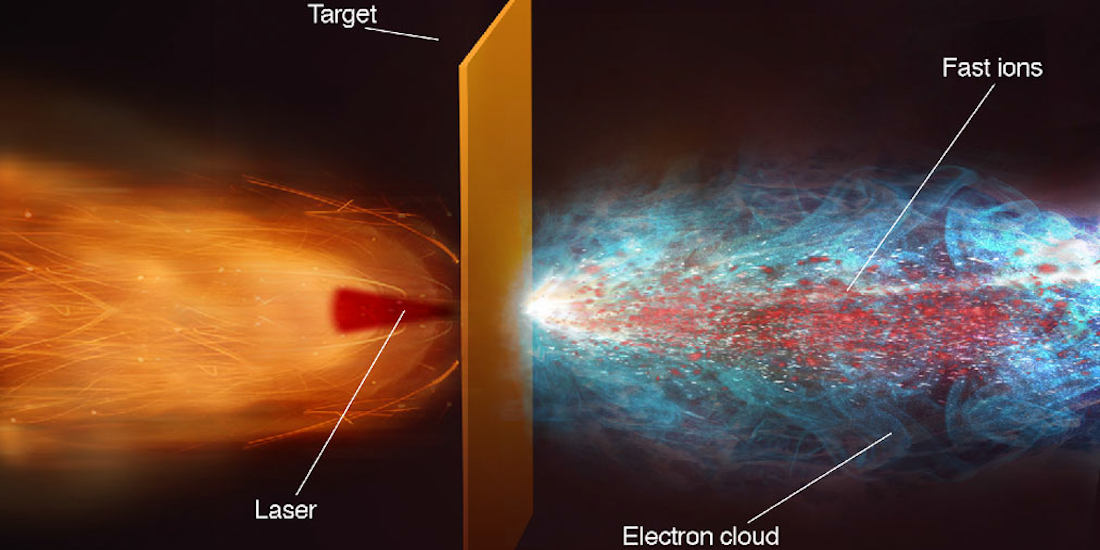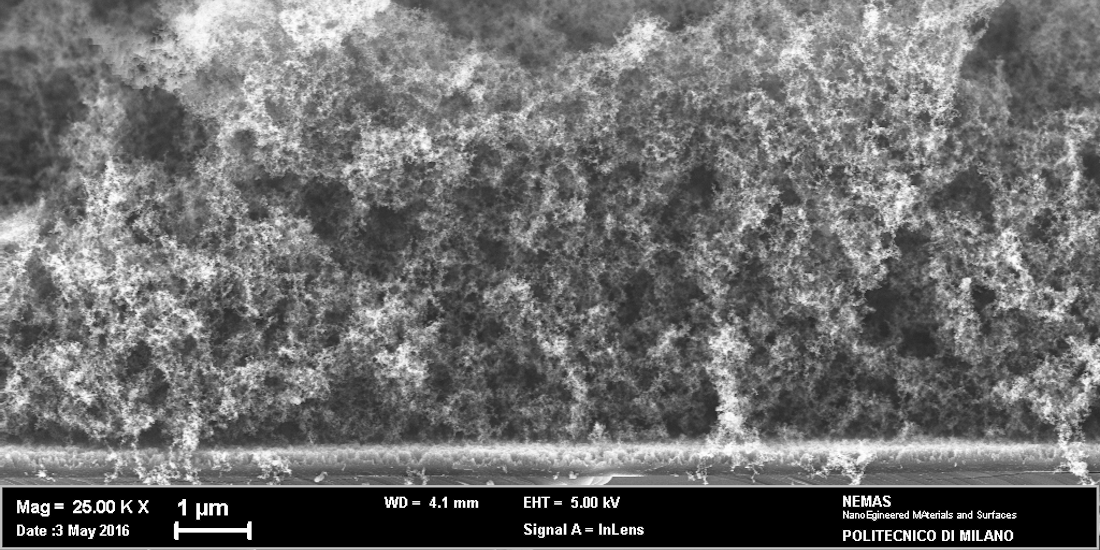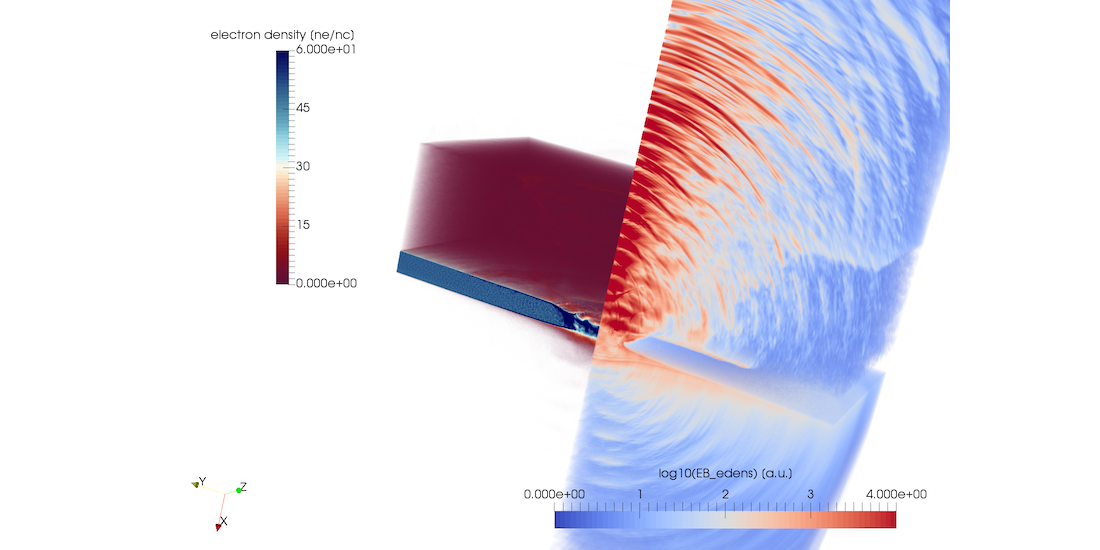One of the most active and innovative areas of laser and plasma science with challenging experimental and theoretical issues. [Rev. Mod. Phys. 85.2 (2013): 751]
Home
Welcome to the ENSURE project website!
ENSURE was a 5-year (2015-2020) multidisciplinary research project for the investigation of ion acceleration through the interaction between superintense laser pulses and nanostructured materials, funded by the European Research Council (Grant Agreement 647554) and hosted at the Department of Energy of Politecnico di Milano (Italy) under the supervision of the principal investigator prof. Matteo Passoni. Click on the button to find out more about the project!
This website is currently updated with the research in the wake of the ENSURE project, the related PoC project INTER and the recently approved PoC project PANTANI.




A multidisciplinary approach!
To achieve our goals, many experimental and theoretical challenges need to be faced within different fields of research in a multidisciplinary approach. Find out more about each of them.
Latest News
Press release on Politecnico di Milano’s website
The Politecnico di Milano published a press release on the …Read More »ENSURE has come to a successful end
After 5 years of fruitful work, the project ENSURE is …Read More »
Latest Publications
Maffini, A.; Cipriani, M.; Orecchia, D.; Ciardiello, V.; Formenti, A.; Consoli, F.; Passoni., M.
Numerical Study of Carbon Nanofoam Targets for Laser-Driven Inertial Fusion Experiments Journal Article
In: Laser and Particle Beams, vol. 2023, no. 1214430, pp. 9, 2023.
@article{nokey,
title = {Numerical Study of Carbon Nanofoam Targets for Laser-Driven Inertial Fusion Experiments},
author = {A. Maffini and M. Cipriani and D. Orecchia and V. Ciardiello and A. Formenti and F. Consoli and M. Passoni.},
url = {https://downloads.hindawi.com/journals/lpb/2023/1214430.pdf},
doi = {https://doi.org/10.1155/2023/1214430},
year = {2023},
date = {2023-09-02},
urldate = {2023-09-02},
journal = {Laser and Particle Beams},
volume = {2023},
number = {1214430},
pages = {9},
abstract = {Porous materials have peculiar characteristics that are relevant for inertial confinement fusion (ICF). Among them, chemically produced foams are proved to be able to smooth the laser inhomogeneities and to increase the coupling of the laser with the target. Foams realized with other elements and techniques may prove useful as well for ICF applications. In this work, we explore the potential of a novel class of porous materials for ICF, namely, carbon nanofoams produced with the pulsed laser deposition (PLD) technique, by means of hydrodynamic numerical simulations. By comparison with a simulation of solid-density carbon, PLD nanofoams show a higher pressure at the shock front, which could make them potential good candidates as ablators for a capsule for direct-drive fusion.},
keywords = {},
pubstate = {published},
tppubtype = {article}
}
Maffini, A.; Mirani, F.; Giovannelli, A. C.; Formenti, A.; Passoni, M.
Laser-driven production with advanced targets of Copper-64 for medical applications Journal Article
In: Front. Phys., vol. 11, 2023, ISSN: 2296-424X.
@article{Maffini2023b,
title = {Laser-driven production with advanced targets of Copper-64 for medical applications},
author = {A. Maffini and F. Mirani and A. C. Giovannelli and A. Formenti and M. Passoni},
doi = {10.3389/fphy.2023.1223023},
issn = {2296-424X},
year = {2023},
date = {2023-07-11},
journal = {Front. Phys.},
volume = {11},
publisher = {Frontiers Media SA},
abstract = {Radionuclides are of paramount importance in nuclear medicine both for clinical uses and radiopharmaceutical production. Among the others, nuclides suitable for theranostics like Copper-64 are particularly attractive since they can play both a diagnostic and therapeutic role. In the last years, the growing demand for these nuclides stimulated the research of new solutions, along with cyclotrons already in use, for their production. In this respect, a promising alternative is laser-driven proton accelerators based on the interaction of superintense laser pulses with target materials. Because of their potential compactness and flexibility, they are under investigation for several applications ranging from materials science to nuclear medicine. Moreover, the use of advanced Double-Layer targets (DLTs) was identified as a viable route to increase the number and energy of the accelerated protons to satisfy the requirements of demanding applications. In this contribution, we numerically investigate the use of DLT-based laser-driven sources for Copper-64 production. We show that activities relevant to pre-clinical studies can be achieved with an existing 150 TW laser and DLTs. Moreover, we extend the discussion by considering a broad range of laser systems by exploiting a theoretical model. Our results can guide the choice of laser and target parameters for future experimental investigations. },
keywords = {},
pubstate = {published},
tppubtype = {article}
}
Maffini, A.; Mirani, F.; Galbiati, M.; Ambrogioni, K.; Gatti, F.; Magistris, M. S. Galli De; Vavassori, D.; Orecchia, D.; Dellasega, D.; Russo, V.; Zavelani-Rossi, M.; Passoni, M.
Towards compact laser-driven accelerators: exploring the potential of advanced double-layer targets Journal Article
In: EPJ Techniques and Instrumentation, vol. 10, no. 1, 2023.
@article{Maffini2023,
title = {Towards compact laser-driven accelerators: exploring the potential of advanced double-layer targets},
author = {A. Maffini and F. Mirani and M. Galbiati and K. Ambrogioni and F. Gatti and M. S. Galli De Magistris and D. Vavassori and D. Orecchia and D. Dellasega and V. Russo and M. Zavelani-Rossi and M. Passoni},
url = {https://doi.org/10.1140/epjti/s40485-023-00102-8},
doi = {10.1140/epjti/s40485-023-00102-8},
year = {2023},
date = {2023-06-01},
urldate = {2023-06-01},
journal = {EPJ Techniques and Instrumentation},
volume = {10},
number = {1},
publisher = {Springer Science and Business Media LLC},
keywords = {},
pubstate = {published},
tppubtype = {article}
}







